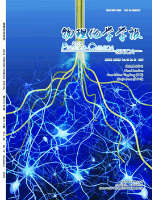
ACTA PHYSICO-CHIMICA SINICA
Scope & Guideline
Advancing the frontiers of Physical and Theoretical Chemistry.
Introduction
Aims and Scopes
- Photocatalysis and Photochemical Reactions:
The journal showcases extensive research on photocatalytic systems, particularly S-scheme heterojunctions that enhance light-driven reactions for hydrogen production, CO2 reduction, and organic pollutant degradation. - Electrocatalysis and Energy Storage:
A significant focus is on electrocatalytic processes, including the development of catalysts for CO2 reduction, oxygen evolution, and hydrogen evolution reactions, as well as advancements in lithium-ion and sodium-ion batteries. - Nanomaterials and Their Applications:
Research on nanostructured materials, including 2D materials, metal-organic frameworks (MOFs), and hybrid nanocomposites, is prevalent, highlighting their roles in catalysis, energy storage, and environmental applications. - Sustainable and Green Chemistry:
The journal emphasizes sustainable methodologies, including the valorization of biomass, recycling of materials, and the development of eco-friendly catalytic processes for chemical transformations. - Interface Engineering and Surface Modifications:
Papers often discuss strategies for optimizing interfaces and surface properties of materials to enhance catalytic activity and stability, particularly in electrochemical systems.
Trending and Emerging
- S-Scheme Heterojunctions:
There is a growing emphasis on the design and application of S-scheme heterojunctions for photocatalytic processes, which are recognized for their superior charge separation and enhanced photocatalytic efficiency. - Advanced Electrocatalysts:
Research on novel electrocatalysts, particularly those utilizing single-atom and bimetallic catalysts, is on the rise, focusing on improving the efficiency of energy conversion reactions such as CO2 reduction and hydrogen evolution. - Energy Storage Innovations:
The journal is increasingly publishing on the development of advanced materials for lithium-ion, sodium-ion, and other next-generation batteries, highlighting innovations in anode and cathode materials. - Biomass Valorization and CO2 Utilization:
Emerging trends include research focused on sustainable biomass conversion processes and CO2 utilization strategies, which align with global efforts to mitigate climate change and promote circular economies. - Integration of AI and Machine Learning:
There is an increasing interest in utilizing artificial intelligence and machine learning techniques to optimize material design and predict catalytic performance, reflecting a trend towards data-driven research approaches.
Declining or Waning
- Traditional Catalysts without Novel Modifications:
Research on conventional catalysts without innovative modifications or enhancements is becoming less frequent, as the field shifts towards more advanced materials and strategies that improve efficiency and selectivity. - Non-Eco-Friendly Processes:
There is a noticeable decline in publications focused on traditional chemical processes that lack sustainability, reflecting a broader trend towards green chemistry and sustainable practices. - Basic Theoretical Studies:
While theoretical studies remain important, there is a shift towards applied research that demonstrates practical applications and real-world implications, leading to fewer purely theoretical papers. - Single-Component Materials:
Research on single-component materials is decreasing as the focus shifts towards hybrid and composite materials that leverage synergies between different components for enhanced performance.
Similar Journals

Carbon Energy
Exploring the future of renewable energy and materials science.Welcome to Carbon Energy, an esteemed open-access journal published by WILEY that focuses on cutting-edge research in the field of energy and materials science. Since its inception in 2019, this journal has quickly established itself as a leading platform for disseminating impactful findings and innovations related to carbon-based energy solutions, renewable resources, and sustainability practices. With its impressive Q1 rankings in multiple categories—including Energy (miscellaneous), Materials Chemistry, and Renewable Energy—Carbon Energy is recognized for delivering high-quality, peer-reviewed content that meets the rigorous standards of the academic community. Through its open-access model, the journal ensures wide accessibility of research findings, making it an invaluable resource for researchers, professionals, and students alike. As we look toward the future, Carbon Energy aims to further its mission of advancing sustainable energy technologies and promoting interdisciplinary collaboration in tackling global energy challenges.
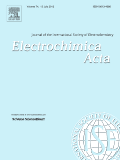
ELECTROCHIMICA ACTA
Connecting Scholars to the Heart of Electrochemical InnovationELECTROCHIMICA ACTA is a prestigious academic journal dedicated to the field of electrochemistry and chemical engineering. Published by PERGAMON-ELSEVIER SCIENCE LTD, this journal stands out with its impressive impact factor and is categorized in the top quartile (Q1) for both Chemical Engineering and Electrochemistry in 2023, further cementing its role as a leading venue for cutting-edge research. With a publication history dating back to 1959 and converging into 2024, it has established a substantial archive of influential articles that explore various aspects of electrochemical processes, materials, and applications. Researchers and professionals in the field benefit from the journal’s high visibility, as it ranks remarkably well according to Scopus metrics, with a position in the 90th percentile for General Chemical Engineering and 84th percentile for Electrochemistry. Although ELECTROCHIMICA ACTA does not currently offer open access, it continues to serve as a vital resource for those seeking to expand their knowledge and explore innovative developments in electrochemical science.
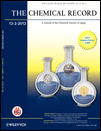
CHEMICAL RECORD
Elevating Research Standards in Chemistry and BeyondThe Chemical Record is a prestigious peer-reviewed journal published by WILEY-V C H VERLAG GMBH, focusing on innovative research and developments across the diverse and evolving fields of chemistry and biochemistry. With an esteemed 2023 Impact Factor and recognized as a Q1 journal in several categories—including Biochemistry, Chemical Engineering, and Materials Chemistry—The Chemical Record stands as a critical resource for researchers, professionals, and students aiming to disseminate and acquire knowledge in these disciplines. The journal's engaging scope covers contemporary topics and fosters collaboration within the global scientific community, ensuring accessibility to cutting-edge research. By publishing articles that meet the highest standards of scholarship, it has earned a significant place within the academic ecosystem, as reflected in its strong Scopus rankings. Although The Chemical Record operates without open access, it remains deeply committed to advancing the field of chemistry through rigorous and impactful publications that bridge gaps between theory and practice.

Chem Catalysis
Exploring groundbreaking discoveries in chemical catalysis.Chem Catalysis is a leading academic journal published by CELL PRESS, specializing in the diverse and dynamic field of chemistry. Since its inception in 2021, this open-access journal has rapidly ascended to prominence, holding Q1 quartile rankings in prestigious categories including Chemistry (Miscellaneous), Organic Chemistry, and Physical and Theoretical Chemistry. With its Scopus rankings placing it in the top tiers—Rank #14 in Organic Chemistry and Rank #12 in Miscellaneous Chemistry—Chem Catalysis serves as a vital platform for disseminating innovative research and catalysis science. Researchers and professionals seeking to stay abreast of cutting-edge developments will find this journal indispensable for advancing their knowledge and contributions to the field. Located in Cambridge, Massachusetts, Chem Catalysis is committed to fostering collaboration and innovation in the chemical sciences, paving the way for breakthroughs that address global challenges.

JOURNAL OF THE ELECTROCHEMICAL SOCIETY
Charting New Territories in Electrochemical Research Since 1948JOURNAL OF THE ELECTROCHEMICAL SOCIETY, published by the ELECTROCHEMICAL SOCIETY INC, is a leading peer-reviewed academic journal dedicated to advancing the field of electrochemistry and its myriad applications. With an ISSN of 0013-4651 and E-ISSN of 1945-7111, this esteemed journal has been a pivotal platform for research since its inception in 1948, with convergence periods allowing for a rich historical context of study through to 2024. Recognized for its high impact, it holds a noteworthy Q1 ranking in several categories including Condensed Matter Physics and Materials Chemistry, and it is Q2 ranked in both Electrochemistry and Renewable Energy. This journal features a range of articles that encompass both theoretical and experimental advancements, making it a crucial resource for researchers, professionals, and students keen on exploring cutting-edge developments in materials science, energy solutions, and sustainable technologies. Although it is not an open access journal, its rigorous standards ensure that published work significantly contributes to the body of knowledge within its fields, fostering innovative research and collaborative progress.

Advanced Energy and Sustainability Research
Exploring Innovations in Energy and Environmental ScienceAdvanced Energy and Sustainability Research is a leading open-access journal published by WILEY since 2020, dedicated to advancing knowledge and understanding in the realms of energy and sustainability. With an impressive impact factor and a commitment to high-quality, peer-reviewed research, this journal serves an international audience of researchers, professionals, and students passionate about addressing critical environmental challenges. The journal encompasses a wide array of topics within environmental science and energy fields, securing notable rankings in Scopus with top percentiles across several categories, including Ecology, Energy Engineering and Power Technology, and Waste Management. Given its open-access model, Advanced Energy and Sustainability Research facilitates the dissemination of cutting-edge research, enhancing accessibility and fostering collaboration within the scientific community. This journal not only plays a pivotal role in shaping public policy and industry practices but also aims to inspire innovative solutions for sustainable development in an increasingly complex world.

Energy Materials
Unlocking the Potential of Materials for Energy Innovation.Energy Materials is a pioneering journal published by OAE PUBLISHING INC, dedicated to the dynamic field of energy materials science and engineering. With a focus on advancing knowledge related to materials used in various energy applications such as batteries, fuel cells, and solar cells, this open-access journal aims to disseminate cutting-edge research and innovative methodologies to a global audience. By offering a platform for original research, reviews, and case studies, Energy Materials plays a crucial role in bridging the gap between materials science and energy technology, facilitating the development of sustainable energy solutions. Researchers, professionals, and students alike will find invaluable insights in its pages, fostering advancements in this essential sector. To explore the latest developments in energy materials, visit Energy Materials at OAE PUBLISHING INC.

CHINESE JOURNAL OF INORGANIC CHEMISTRY
Exploring New Dimensions in Inorganic ChemistryThe CHINESE JOURNAL OF INORGANIC CHEMISTRY, published by the esteemed CHINESE CHEMICAL SOC, stands as a pivotal resource for researchers and professionals in the field of inorganic chemistry. With an ISSN of 1001-4861, this journal has been disseminating cutting-edge research since its establishment in 1996 and continues to influence the scientific community with its commitment to high-quality publications. Although currently classified in the Q4 quartile for Inorganic Chemistry and ranked 70th out of 79 in its category according to Scopus, the journal serves as a platform for innovative studies that push the boundaries of inorganic materials and compounds. While it operates on a traditional access model, the journal is dedicated to fostering scientific discourse and collaboration among scholars in China and beyond, making it an essential reference for anyone involved in inorganic chemistry research.
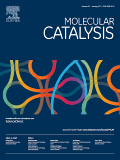
Molecular Catalysis
Advancing the Frontiers of Catalytic ScienceMolecular Catalysis, published by Elsevier in Netherlands, is a premier academic journal that explores the cutting-edge domain of catalytic science. With an impressive impact factor and classified in the top quartiles (Q2) in various fields such as Catalysis, Physical and Theoretical Chemistry, and Process Chemistry and Technology, this journal stands as a significant resource for researchers and professionals committed to advancing the understanding of catalysis processes. Since its inception in 2017, it has been pivotal in publishing high-quality, peer-reviewed research that addresses crucial challenges and innovations in molecular catalysis. The journal is fully Open Access, allowing unrestricted access to its articles, thus fostering a wider dissemination of knowledge. Recognized for its rigorous editorial standards, it features works that push the boundaries of current scientific understanding, making it an essential platform for students and academics alike to share and grow in their expertise.
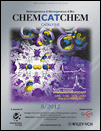
ChemCatChem
Pioneering Insights in Inorganic and Organic Chemistry.ChemCatChem is a leading international journal published by WILEY-V C H VERLAG GMBH that has been making significant contributions to the fields of catalysis, inorganic and organic chemistry, as well as physical and theoretical chemistry since its inception in 2009. With an established reputation for excellence, this journal holds commendable rankings in various categories, including Q1 in Inorganic Chemistry and Q1 in Organic Chemistry, demonstrating its pivotal role in advancing scientific knowledge and innovation. Notably, it has achieved a high Scopus ranking, securing 10th place out of 79 in Inorganic Chemistry, among others, showcasing its influence and quality. Although open access options are not available, the journal offers cutting-edge research articles, reviews, and insights that are vital for researchers, professionals, and students aiming to stay at the forefront of chemical science. With its address rooted in Weinheim, Germany, and convergence projected to continue until 2024, ChemCatChem remains a dynamic platform for disseminating vital advancements within the chemical community.